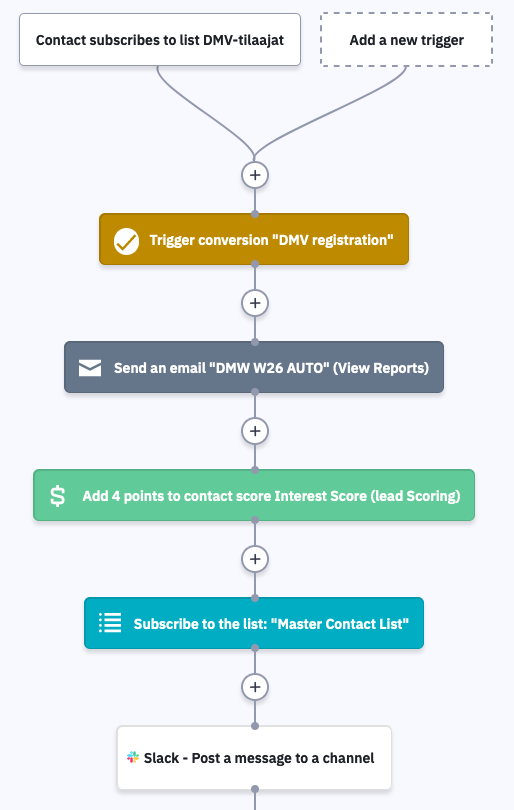Nowadays, sales and marketing processes are often increasingly complex. Multiple stages can exist, and they can intersect at many points across different processes. Automation often helps move customers or prospects through these processes.
There are different types of automation, and they can be somewhat platform-dependent. Not every marketing platform can execute the same automation because the available records vary.
Internal automation keep data organized
Sales and marketing automation can be roughly divided into internal and outward-facing categories. Internal automation can be further subdivided into notifications and data movements.
Notification automations are perhaps the simplest. After a desired event, a notification is sent to the designated person. This often happens via email, but it can also be done through integrations with messaging applications. The person may also receive a notification within the system.
Here’s an example: In a CRM, you want to automate the creation of new leads in the system. Additionally, you want a notification about the new leads to be sent to the responsible person’s email inbox. Depending on the platform, this automation can be pretty simple to implement. It might consist of two parts: the first part is triggered by the form submission, and based on the information provided, the lead is created in the system. Additionally, a notification is sent to the lead owner via email.
The example mentioned also includes automating the creation of leads in the system, which is a different type, though still an internal, automation. This is another example of very useful automation; for instance, when a website visitor submits a lead magnet form, a new lead can be automatically created in the system based on the provided information. Other functionalities can be added, such as adding a new person or updating existing information.
Automations often require some sort of input to start, like the aforementioned form submission. However, the input can be almost anything, such as a specific date, an x-day delay, a new action taken by a person, or something similar.

At Aboad, internal automation is used in both sales and marketing. For example, we receive notifications in Slack for appointment bookings and Digital Marketing Weekly subscriptions. For some of these automated processes, we’ve used the Zapier service, which allows us to connect services that otherwise couldn’t be integrated. Other similar services exist, of course.
Automation to reach visitors
Automation can certainly be used for outward-facing communication as well. At Aboad, our most complex automation involves customer onboarding. When a customer signs a contract with us, they are added to an automation that, among other things, sends links, surveys, and additional information about starting the collaboration via email.
The most common automation is probably the email sent to subscribers after a new blog post is published. This is essentially a simple automation, but it can be made as complex as needed. The trigger for the automation doesn’t have to be just the publication of a new article.
Email-based automations are useful, but nowadays, we can go further. Instead of emails, other communication channels like instant messaging applications can be used. Additionally, current technology allows for website personalization, where automation can be effectively utilized.
However, one must be careful when using automation for marketing purposes. Too obvious and poorly constructed automation can produce the opposite of the desired outcome. It’s easy to become overly enthusiastic about communication via automation, so keeping a sensible balance is essential.
